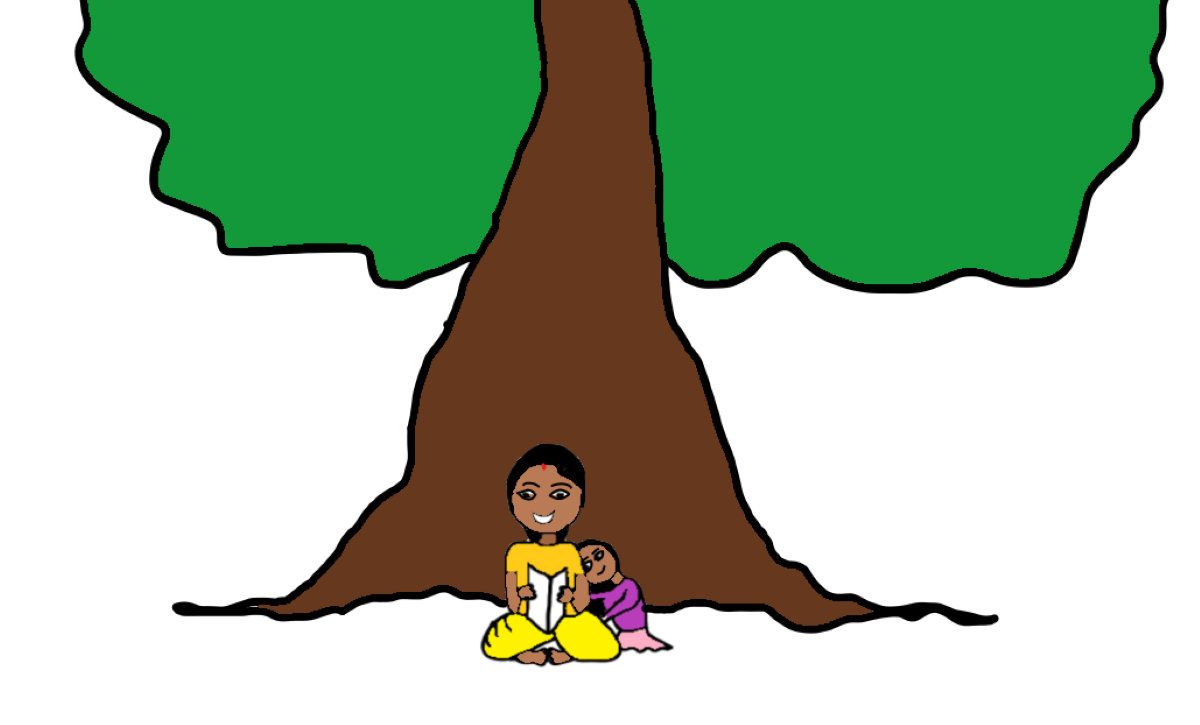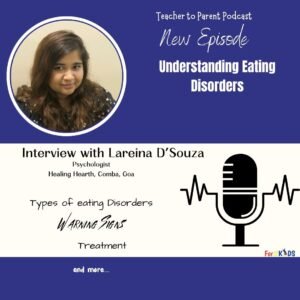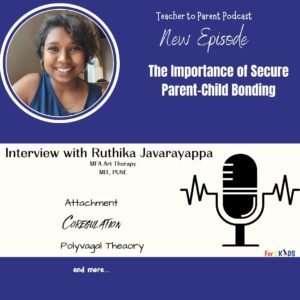Teacher to Parent Podcasts
The pandemic has changed the world as we know it. Unfortunately, we will continue to see the effects of these changes on our children for years to come. This past year, parents have had to learn so much about their children’s education. Questions about their children’s learning pop up all over by email, Facebook queries, and phone calls, “My child needs help with this and that. How do I support my child?”
It is encouraging to see other parents, and sometimes, professionals offer excellent suggestions. A common thread runs through many of the tips, though, which is the use of worksheets and workbooks. Some enterprising individuals have virtual camps, even for 2-year-olds, on phonics and writing! It is easy to see how some of these topics can overwhelm parents, and workbooks or camps may seem like the solution. That is when we at For All Our Kids had an idea.
What if we provided parents access to information that would demystify some of the suggestions flying around? If parents understand the reasoning behind no phonics for two-year-old children, they won’t be pressured to enroll their toddlers in virtual camps. That is why we started the Teacher to Parent segment!
The first topic in our Teacher to Parent segment is “How children learn to read.” Parents of young kids all want their children to learn to read. What is the first thing that comes to mind when parents and teachers talk about how children learn to read? That’s right, phonics! Almost every parent in urban India has heard of phonics. That’s why parents rush to enroll even their toddlers in phonics classes. The reasoning is that if phonics is such a necessary skill, it only makes sense to start training their child from a young age.
But wait! Phonics is an essential skill, but is your young child developmentally ready for it? Would you expect a six-month-old to run? No. But you do monitor your six-month-old to see if they are doing the age-appropriate crawling or creeping. It’s the same for literacy development. Yes, your child needs to learn phonics, but there are other developmentally appropriate early literacy skills your child must acquire first. There’s so much you can do at home to develop children’s early literacy skills before your child is developmentally ready for phonics instruction.
I’m sure most of you have heard the first suggestion:
Read to your children every day, even when they are babies.
Now, why is that?
Take the case of the child Rani. She is four years old and ready for LKG. In Rani’s family, someone or the other has been reading to her for at least 20 minutes, five days a week. Now, at four years of age, she has read with an adult for approximately 347 hours! Think about what she has gained in these hours of reading — vocabulary, concepts of size, colours, places, animals, numbers, letters, and some or all letter sounds. Do you think she is ready for formal schooling? Yes, and all without going to a camp. Rani has been exposed to these concepts gradually and over an extended period in a developmentally appropriate way!
Now, for those of you wondering about the number of hours, yes, reading to babies counts! They may not get the concepts or vocabulary, but that is not the goal for them. When you read to babies, you are laying the foundation for future learning. You do the pointing and labeling of the pictures and use your voice to highlight the words. Read louder, quieter, read the words slowly, and then, faster and faster. Show your child that you are having fun. The baby learns that reading is a pleasurable activity.
Here are some tips from us on how to read to your young children:
1. Make reading an interactive activity. That means you must stop now and then and maybe ask a question about something in the book. Here’s the critical part — wait for your child to respond. Or, when your child points to a picture in the book, respond by validating their comment and adding additional details. For example, If you are reading the story ‘Fox and the crow, and your child points to the fox, say, “You are right; that is the fox! He is watching the crow.” So, you confirm what your child is referring to, and add a little bit more information. With an older child, leave the last word out and pause expectantly. Your child will complete the sentence. For instance, say, “The vada fell down, and the fox …..” Your child will add “ate it.” Repetitive books or rhyming books are also suitable for this activity.
Two things come to mind when we say keep it interactive — too many questions and comments will interrupt the flow of the reading, and your child may lose interest in the book. So, ask questions but not too many.
When you ask questions, keep your expectations age-appropriate. For example, do not expect your six-month-old to start pointing to the pictures when you ask them to do so. I say this because some parents have expressed concerns that their six-month-old cannot respond correctly to their questions.
2. Choose books with lots of pictures. Then, allow your child to hold the book and manipulate it. If your very young child holds the book upside down, don’t fret it. Just right it and go ahead and read.
3. As you read, say the names of the pictures, not any unique name your child has for the object. So, if your child uses a particular word, say, ‘ow’ for the dog, you label the picture as ‘dog.’ Then, you can expand on it by saying, “That’s right, the dog says Bow.” By using real words, you build your child’s vocabulary.
4. Read a book multiple times. You don’t have to reread them on the same day unless your child wants to, of course. When children begin to read independently, they pick up familiar books to read. And what do they do? They repeat the words from memory and even imitate your tone. Rereading books helps children remember the words.
5. Listen to your children. Stop when they want to stop. Sometimes, we get super enthusiastic about all the tasks we want our kids to complete. If we want kids to see reading as a pleasurable activity, we must listen to them when they want to stop. You can always encourage them to read again later in the day.
6. Track the words with your finger as you read. Children will follow your finger from left to right and learn that written language flows from left to right.
7. Let your children see you reading. When they know that you enjoy reading, children will associate reading with pleasure. Why is that important? We tend to repeat activities that give us pleasure. If children feel that reading is a pleasurable activity, they will reach out for books on their own.
Is there anything else other than reading books? Yes, of course!
8. Draw your child’s attention to printed words in their environment. Environment print is all the words you see around you: the posters on the bus, the logos, the names of shops, and road signs. These are the words your child sees often and in context. Your child learns that these printed words have a purpose; they have a meaning. If your child sees the word Parle-G, he connects it to ‘biscuit.’ If he sees Cadbury’s, then it’s chocolate. It’s not about knowing the spelling but connecting the word to something meaningful.
This is the end of today’s Teacher to Parent podcast. We hope you have fun reading to your children. Come back next week, for we will talk about the five elements of learning to read and where phonics fits in the bigger picture.
Click here to read more on





